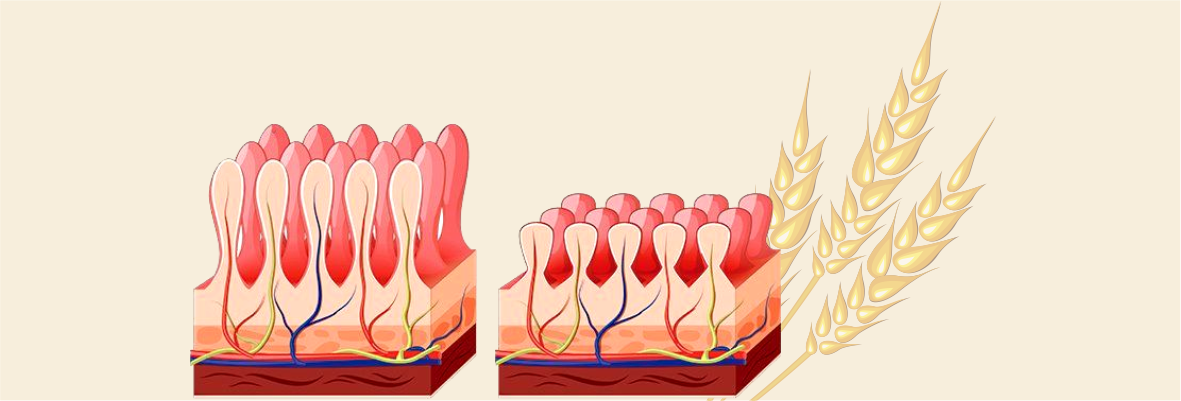Celiac Disease
Celiac disease is an autoimmune disorder that is triggered by the consumption of gluten. Gluten is a protein present in wheat, barley, rye, and other grains, making the dough elastic and giving bread its chewy texture. A patient with Celiac disease consumes gluten body overreacts to the protein and damages their villi present in the small intestine.
A damaged small intestine can not properly absorb nutrients from food, which in turn can lead to malnourishment and the loss of bone density, miscarriage, infertility, or even neurological diseases or certain cancers. Most people with Celiac disease are unaware of having it.
Researchers believe that only 20% of people with the disease are getting the correct diagnosis. The most common signs and symptoms of Celiac disease include: Diarrhea, bloating, excess gas, fatigue, and weight loss, Iron-Deficiency Anemia, Constipation, Itchy Rash, and Depression.
Tissue transglutaminase (tTG) is a calcium-dependent ubiquitous intracellular enzyme that is present in the inner lining of the small intestine and is released during cellular wounding brought about by mechanical stress, inflammation, infection, or apoptosis and therefore becomes a potent autoantigen for Celiac Disease. Thus autoantibodies with the activation of tTG in patients with Celiac disease have a significant biological role in detection the disease and the possible treatment. The differentiation, which depends on transforming growth factor (TGF)-b, can be prevented either by adding a blocking antibody to TGF-b or of IgA autoantibodies to tTG.
The global prevalence of Celiac disease is around 1%. In India, it is more prevalent in the North Indian population, where wheat is primarily the staple cereal. Only recently has it been found to be evident in the South Indian population. In recent studies, the celiac disease’s prevalence is doubling every 20 years, which could be due to multiple reasons like increased consumption of wheat, usage of the new strain of wheat, which is considered more antigenic, increased use of antibiotics, etc.
The diagnostic rate of Celiac disease is extremely low presently, comprising only about 5% of the total affected population. Blood tests are primitive screening tests that measure antibodies’ levels in the blood due to gluten ingestion. tTG-IgA and total serum IgA are the most commonly recommended tests. tTG-IgA antibody (tTG) is an Immunoglobulin A based antibody test called tissue Transglutaminase antibody. It’s a screening test for Celiac disease and is commonly used around the world. In India, the only such kit has been developed by J Mitra & Co.
Gastrointestinal biopsy of intestinal tissue is the standard gold test for diagnosing Celiac disease, as initial tests from blood/serum could be discrepant at times. The biopsy is conducted before gluten intake is stopped and is evaluated to understand the extent and type of intestinal damage. Anti-endomysial test (EMA) used to be an economical test, but being more laborious and having a complex interpretation of results has become redundant. Since the EMA test is less sensitive to tTG, children less than two years should get tested more often by an Antibody test than the EMA test alone.
Since tTG is also produced by other ailments, especially by intestinal infections, it could interfere with the disease’s proper detection. Hence, in a country like India, a more sensitive test like ELISA is recommended to detect the disease’s precise level. The ELISA kit for the identified autoantigen, as made by J Mitra & Co. is simple to use and economical and helps in rapid screening of the general population for the presence of latent or subclinical Celiac disease. Moreover, the RDT or ELISA advantage over EMA is that it is not labor intensive and doesn’t require any waiting period for the patients. To add to the Lab and the patient’s benifit, the ELISA test provided by J Mitra & Co. also has the option of reporting in both Semi Quantitative and Quantitative modes.

